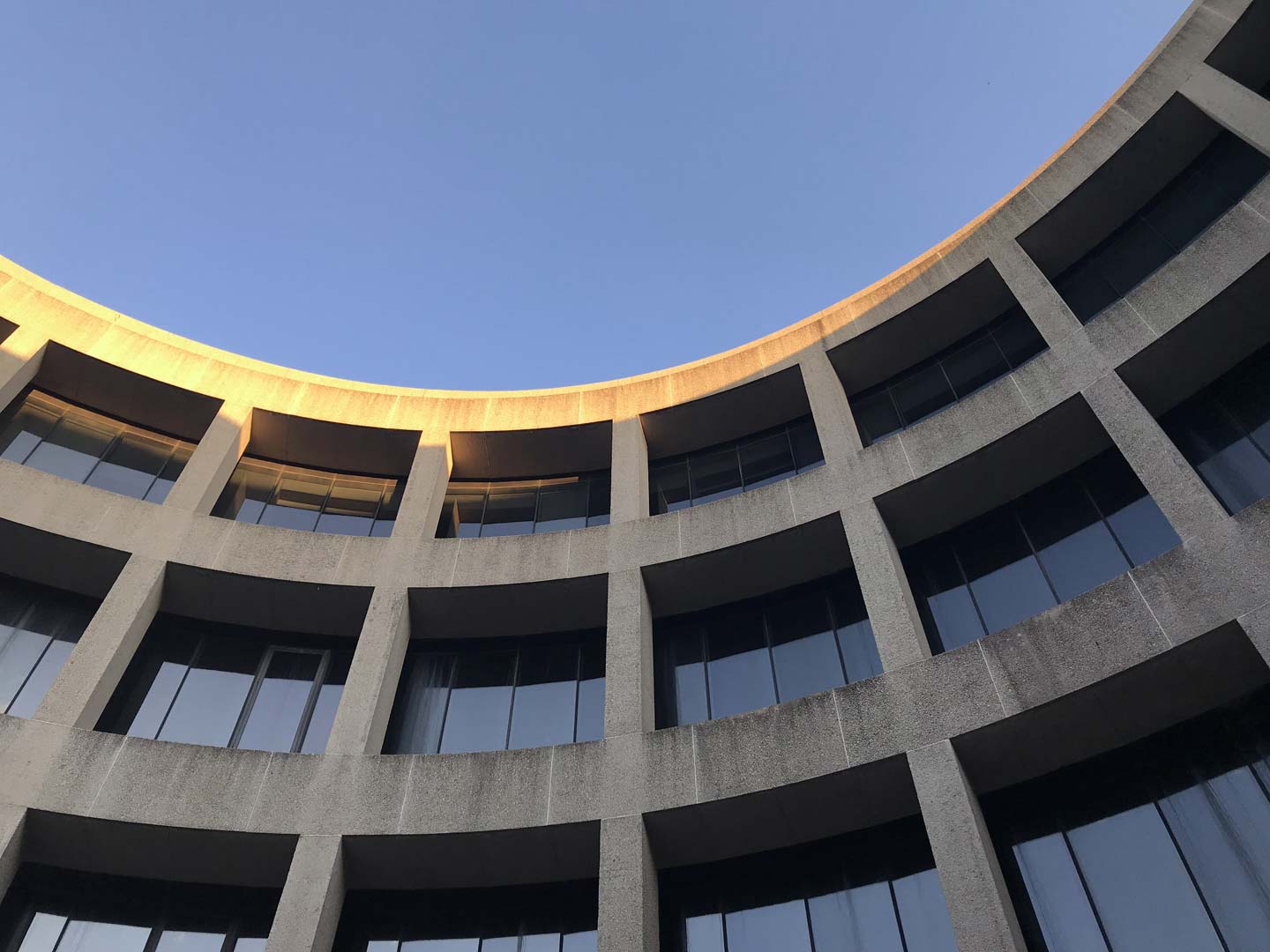After almost three years of Italian life in Venice, I was happily back in Washington, DC. It is, undoubtedly, the city that first nurtured my transition from graduate student to a professional in the arts and culture scene; it felt like being back home. I was working for the Embassy of Luxembourg at that time and had set myself the short-term goal of finding a master’s program in Art History. It felt right that, in the meantime, I could continue developing a close connection with the arts. While many years had passed since my first internship as a curatorial assistant at the Hirshhorn Museum and Sculpture Garden, the good memories that I kept from this experience motivated me to reach out to their new staff. They kindly welcomed my offer to join them during the weekends as Gallery Guide. I was thrilled for this role would allow me to stay up-to-date and keep abreast of new trends in the world of exhibition-making.
My time at the Hirshhorn Museum coincided with two major exhibitions: Manifesto: Art x Agency (June 15, 2019 – April 6, 2020) and Marcel Duchamp: The Barbara and Aaron Levine Collection (November 9, 2019 – October 5, 2020). For me, they were to become open books on twentieth-century art and, just like I did during my time at Fondation Pinault, I made sure to visit the exhibitions several times in order to prepare my written guides. As I was already familiar with the Hirshhorn’s on-site library, I did not hesitate to use this as an additional resource.
For the first exhibition, paintings by Giacomo Balla, Salvador Dalí, Helen Frankenthaler, George Grosz,René Magritte, and Jackson Pollock – to name a few – stood in front of me to my utmost delight. Indeed, artist manifestos from the twentieth-century to the present day were the centerpiece of this exhibition exploring how artists had used them as a means to delve into the political and social issues of their time. Chief Curator Stéphane Aquin had decided to present the exhibition in three sections: first, a mighty display of the Hirshhorn Museum’s modern collection holdings; second, a multichannel installation (on thirteen video screens) of Julian Rosefeldt feature-length film Manifesto (2015) starring Cate Blanchett asthe eclectic performer of excerpts from some of history’s greatest artist manifestos; and third, a selection of contemporary artworks from the permanent collection that altogether illustrated the relevance ofpolitical movements and other forms of social change in today’s context. I will always recall the sense of enjoyment that I felt during my guided tours, taking the public on a powerful visual, historical journeythrough the circular halls so characteristic of the Hirshhorn Museum.
The second exhibition would open for me another door toward learning, for while the name of Marcel Duchamp carries a strong popular resonance – similar to that of Andy Warhol and Pablo Picasso – thiswas by no means a guarantee that the study of his life and work would be an easy feat. Therefore, I was glad for the opportunity to delve into this research hoping that my knowledge of Duchamp would be able to complement that of even the most experienced connoisseur. With over fifty major historical works featured in the exhibition, the Hirshhorn Museum was able to offer viewers a rarely-seen array of artworks that shone a light into the creative genius of Duchamp. For instance, some of his most famous readymades, such as L.H.O.O.Q. and Why Not Sneeze? were displayed in the same exhibition space as a number of Duchamp’s prints and drawings related to his magnum opus, The Bride Stripped Bare by Her Bachelors. As I found myself acquiring more knowledge on Duchamp, I particularly enjoyed the section in the exhibition that featured several portraits of the artist as well as works by his contemporaries and artists he influenced, including Man Ray, Henri Cartier-Bresson, and Tristan Tzara.
For these and other teachings in twentieth-century art, I can say to have proudly concluded my second chapter at the Hirshhorn Museum and Sculpture Garden. My recollections of this architectural gem and the art historical treasures that live within it are deeply rooted in the field of my memory.
